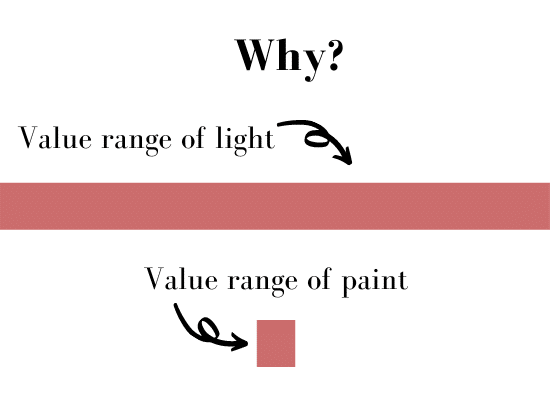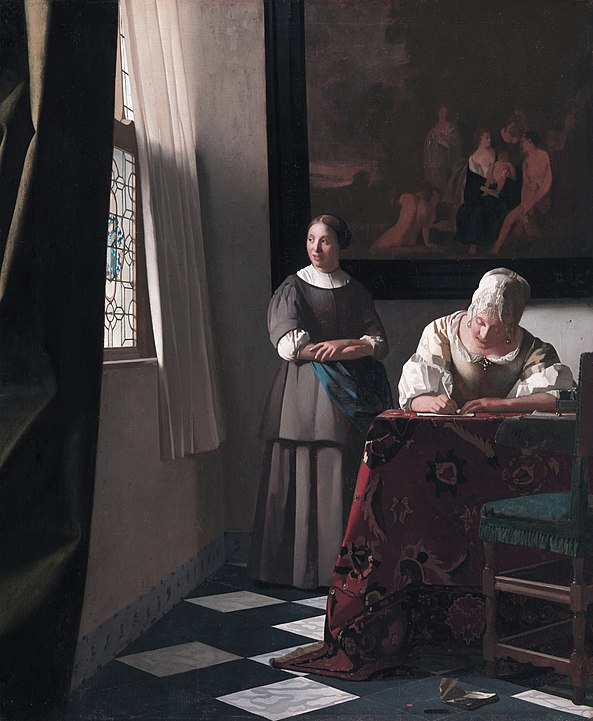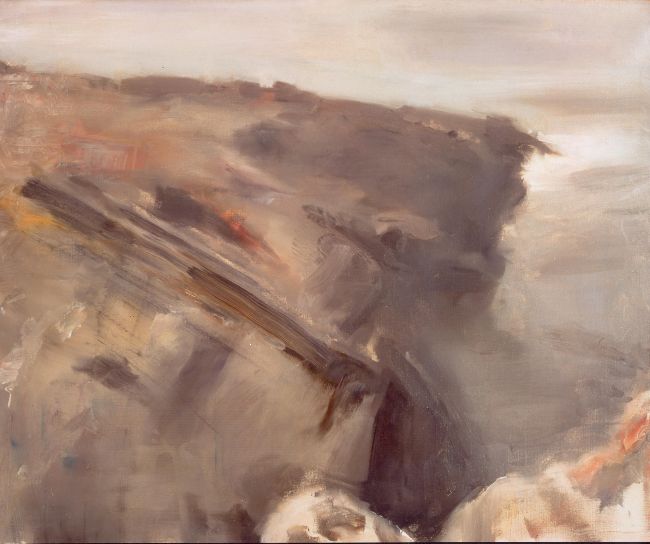When you hear the words abstract art or abstract painting you may typically think of something that does not attempt to represent any kind of reality. Images of paintings that are made of splashes of paint with randomly placed lines, colors and shapes might even come to mind.

However the term abstract art – and abstract painting specifically, is much more complex than that. In this article I will present to you a fresh perspective on abstract painting that is important to understand. As it will change how you look at all types of paintings including your own!
All Painting is Abstract…
To start out ALL PAINTING IS ABSTRACT. Yes ALL. This might come as a bit of a surprise but it couldn’t be more true. Even the most realistic painting by any artist from the past or present is abstract. Now I can hear the (what?!) emanating through the screen as I write this;) But stick with me for a sec here and I’ll show you what I’m talking about!
What Makes a Painting Abstract?
Common definitions of Abstract art state, that it is comprised of shapes, lines, forms and color to create a composition. However as an artist, you cannot possibly paint absolutely everything you see – it is physically impossible. No matter how great of an artist you are, the range of light that exists in our world is just too enormously vast. While the range of light available to us within our paints by contrast, is quite limited.

The image directly above, gives an illustration of how vast the value range of light is in the world compared to that of paint. For this reason you MUST simplify when you paint. In order to do this you have to break down what you see and abstract from it.
How Representational Paintings are Abstract
Take for example the painting by Vermeer below. It is an incredible representation of reality – the light feels absolutely real. However, it is also a very abstract painting. See how he simplified what he saw into shapes, as well as light and dark value groupings. Vermeer learned how to see as a painter and how to distill the vast range of light and dark values into just a few value groups. It is only by simplifying and seeing in an abstract way that he was able to achieve the level of reality that he did in his paintings.

Below is a detail from the above painting. Notice the shapes of the shadows on the sleeve of the woman. Vermeer abstracted what he saw into distinct shapes and light and dark groupings.

However, it is not just Vermeer but all of the great master painters painted in an abstract way. That is because it is absolutely necessary to simplify and see in an abstract way in order to create compelling paintings that represent what you see.
The Fundamentals of Painting Abstract Art
You might be wondering now – what about the paintings that don’t necessarily look like something “real”? Well these paintings still utilize the same fundamental elements that more “realistic”, representational paintings do.
The painting below ‘Rock Port of Issol, West Side’ by Edwin Dickinson is an example of a piece that is not immediately obvious as to what it is depicting. Despite this, the artist simplifies light and dark values just as much as the Vermeer painting above – although in an entirely different way!

If you look at the painting by Dickinson, you can see a strong sense of light, as well as a strong sense of space. You can also see soft and hard edges and how warm colors give way to cool. You may not be able to tell right away what the subject of the painting is. However, the subject is secondary to the visual experience the painting represents.
The artist was working from live observation when painting the piece. Meaning that he was looking at a rock by the water during the process of this painting. This of course means that the painting is based upon something in real life.
In comparison abstract paintings that may not be based upon something in the ‘real world’. Comprised of assortments of shapes and colors and don’t seem that they look like something in particular. Still use the same abstract way of painting and seeing as more ‘realistic art’.
Examples of Modern Abstract Art

Take for example this piece above by Francis Picabia. You will see different shapes amid an array of muted colors. You can’t necessarily identify this painting in terms of a particular subject. Also, it wouldn’t be classified as a still life, landscape or portrait for that matter either.
You would most likely call this piece an abstract painting – as there is no other simple way to quickly label and identify it. Although it is just as much of an abstract painting as the previous paintings shown in this article, it is abstract in a different way. There is no attempt made to take inspiration from the real world through observation like the other paintings.

Instead it just uses the language of painting – edges, color, value and composition to create the piece. In place of something in the real world being the point of inspiration it may have been something non-visual such as an idea, story, or pure imagination on part of the artist. Despite this, it is the formal fundamental elements and language of painting, that unites all painting (no matter the style) under the same umbrella.
The previous paintings shown by Vermeer and Dickinson are completely based in and also made with a strong base in the fundamentals. However, what makes them different is that they were painted through direct observation of something in the real world. The source of imagery is simply different!

How the Fundamentals Apply
In all painting – no matter what type – the fundamentals play a HUGE role. All painting has to break down its visual elements and simplify in some way or another. These core principals are absolutely necessary to create compelling work whether ones goal is to create realistic or ‘abstract’ painting.
I encourage you to delve deeper into the fundamentals of painting regardless of what kind of painting style you want to pursue! Learning and understanding the principles of painting will help you to grow in all areas of your skills as an artist.
So what do you think…what’s your take on abstract art and painting?! Let me know what you think in the comments below.






14 thoughts on “What is Abstract Painting? A Fresh Approach to Painting Abstract Art”
A concise account that emphasised the fundamentals of painting. Good!
Glad to hear that, thank you Allan
Very valuable lesson in easy way, Thanks very much
Happy to hear that! Thank you for sharing Vishnu 🙂
Another great article thanks Elisabeth. I have been looking at many artists while my shoulder has been healing and a common drift is the notion of colour spots. I have used them with a painting of a dog I did with an Australian artist Barry McCann. He uses Acrylics and makes them look like oils. His representational technique requirescolour spots and soft and hard edges. i will post apicture of my efforton the facebook site.
regards Warren
Good to hear from you Warren! That is wonderful that you have been looking at a lot of artists while your shoulder is healing – great way to engage yourself with painting before you can fully use your shoulder again. That is interesting that a common thread between them all has been color spots. Am not surprised! I look forward to seeing your dog dog painting that you did with Barry McCann.
as a beginner who hasn’t put paint to canvas I am learning so much from you and the art community.. I guess my approach to creating a style will be to listen to music, inspiring shares, whatever comes into my path that day and express my thoughts and feelings onto the canvas..great article Elisabeth! Sue g in pa
Thank you for sharing Sue! So glad to hear that you are learning from the information I put on the Art Studio Life website. Best Wishes to you 🙂
Very insightful and shared with such clarity, Elisabeth! Thank you.
Thank you so much Patricia! Am glad that the teaching was clear! Always happy to hear that! 🙂
Very good abstracted lesson. I cannot hear it enough! Thank you.
Thank you Sue! I am glad that you enjoyed the ‘abstract painting’ lesson! 🙂
You send your ad to my email address, yet your comment form asks me for my email…?? Is there something wrong there? could you explain?
Hi Larry, So sorry about that. Unfortunately we have to ask for e-mails on the comment form because we receive an incredible amount of spam comments from bots if we don’t (roughly 200/ day). Your e-mail isn’t used in any way – simply to help verify the people commenting are real 🙂